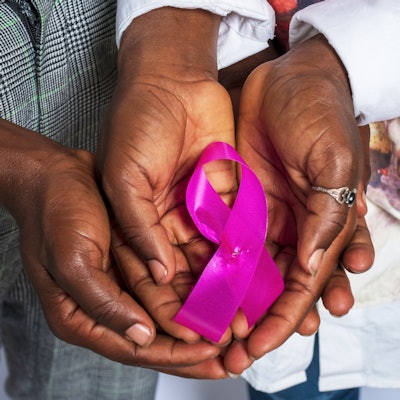
Black U.S. women are most likely to experience delays in diagnosis after being recommended for biopsy for abnormal screening mammography results, suggests a study published June 23 in JAMA Oncology.
Researchers led by Dr. Marissa Lawson from the University of Washington in Seattle found that Black women had an increased risk of not having a biopsy performed within 30, 60, and 90 days after breast cancer screening. The type of screening facility -- such as academic affiliation and the biopsy services it offered -- accounted for the greatest reduction of Black women's increased risk of no biopsy.
"Our findings suggest that breast imaging facilities have an opportunity to reduce disparities in time to breast biopsy by improving their processes along the diagnostic imaging pathway after screening," Lawson told AuntMinnie.com.
Previous research suggests that diagnostic delays after a screening mammogram is deemed suspicious reduce the benefits of early breast cancer detection. The study authors wrote that delays of 90 days or longer are linked to a greater proportion of late-stage disease, greater morbidity from more aggressive treatment, fewer life-years gained, larger tumor size, and positive lymph node status. Delays shorter than 90 days can cause psychological distress in women waiting for their biopsy.
Studies have also shown that women from racial and ethnic minority groups are more likely to experience longer times to diagnosis or treatment.
Lawson and colleagues wanted to evaluate differences in time from suspicious mammography results to biopsy among racial and ethnic groups in the Breast Cancer Surveillance Consortium (BCSC). They also looked at the risk of having no biopsy performed within 30, 60, and 90 days of abnormal screening results by racial and ethnic group, as well as how different factors affect the relationship between groups and delays. Factors evaluated were at the individual, neighborhood, and healthcare levels.
The researchers looked at data from 45,186 women with an average screening age of 56 years. A total of 46,185 abnormal screening mammograms acquired at 109 imaging facilities were also included. Of the suspicious mammograms recommended for biopsy, 15,969 (34.6%) had a 30-day delay. A total of 7,493 (16.2%) had a 60-day delay, and 5,634 (12.2%) had a 90-day delay.
| Relative risk of no biopsy after suspicious screening mammography findings | ||||
| White | Asian | Hispanic | Black | |
| 30 days | 1 (reference) | 1.66 | 1.50 | 1.52 |
| 60 days | 1 (reference) | 1.58 | 1.38 | 1.39 |
| 90 days | 1 (reference) | 1.21 | 1.12 | 1.28 |
The study authors also found that sequential adjustment for selected factors at the individual, neighborhood, and healthcare levels that didn't take into account the type of screening facility did not significantly change the risk of no biopsy within 90 days for Black women (relative risk, 1.27).
However, the team found "modest" decreases after adjusting for features associated with screening facilities, such as academic affiliation and the provision of onsite biopsy. Facilities that did not have these factors had higher relative risk of biopsy delays (relative risk = 1.2).
Lawson said that with this knowledge, radiologists can prioritize structural factors within their imaging facilities when looking to address disparities in time to biopsy, such as the use of patient navigators.
She told AuntMinnie.com that future work will identify other structural factors, such as at the neighborhood or healthcare level, that contribute to disparities in outcomes in the diagnostic imaging pathway.
"Specifically, we aim to examine which facility-level structural factors, such as patient navigation, may alleviate delays," she added.
In an invited commentary piece, Dr. Randy Miles from Denver Health in Colorado wrote that while healthcare disparities based on race are well documented, there is a lack of consensus on how to approach racial gaps in care. This includes acknowledging racism as an independent risk factor for poor health outcomes.
"It is important to acknowledge that while systemic racism is intimately intertwined in many facets of U.S. society, the significance of historical injustices on patient outcomes may vary at the local level," Miles wrote. "To overcome this limitation, the findings of Lawson et al support the need for health care practices to monitor key breast care quality data by race locally to readily identify and address disparate patterns of care."




















